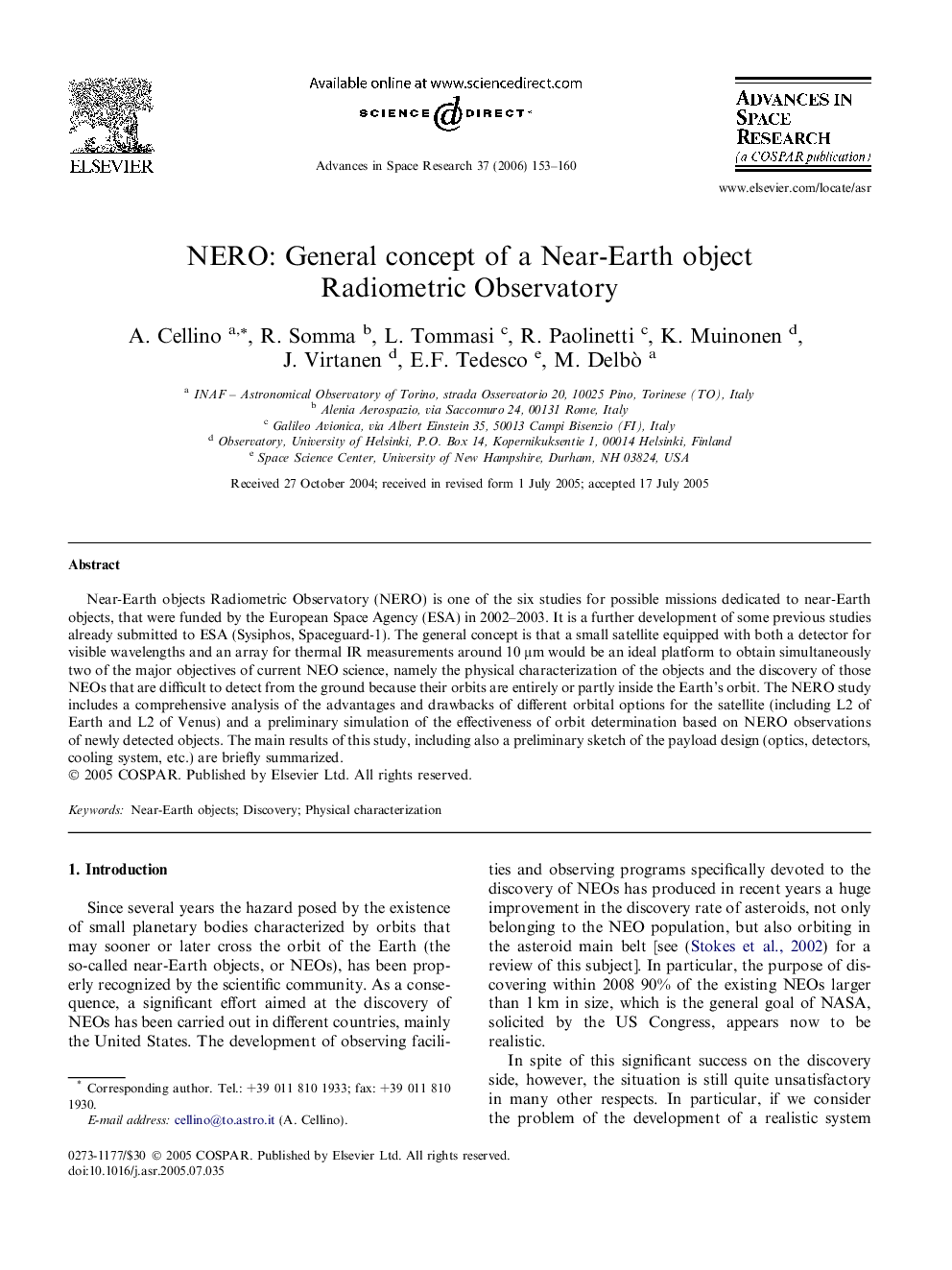| Article ID | Journal | Published Year | Pages | File Type |
|---|---|---|---|---|
| 1767525 | Advances in Space Research | 2006 | 8 Pages |
Near-Earth objects Radiometric Observatory (NERO) is one of the six studies for possible missions dedicated to near-Earth objects, that were funded by the European Space Agency (ESA) in 2002–2003. It is a further development of some previous studies already submitted to ESA (Sysiphos, Spaceguard-1). The general concept is that a small satellite equipped with both a detector for visible wavelengths and an array for thermal IR measurements around 10 μm would be an ideal platform to obtain simultaneously two of the major objectives of current NEO science, namely the physical characterization of the objects and the discovery of those NEOs that are difficult to detect from the ground because their orbits are entirely or partly inside the Earth’s orbit. The NERO study includes a comprehensive analysis of the advantages and drawbacks of different orbital options for the satellite (including L2 of Earth and L2 of Venus) and a preliminary simulation of the effectiveness of orbit determination based on NERO observations of newly detected objects. The main results of this study, including also a preliminary sketch of the payload design (optics, detectors, cooling system, etc.) are briefly summarized.
